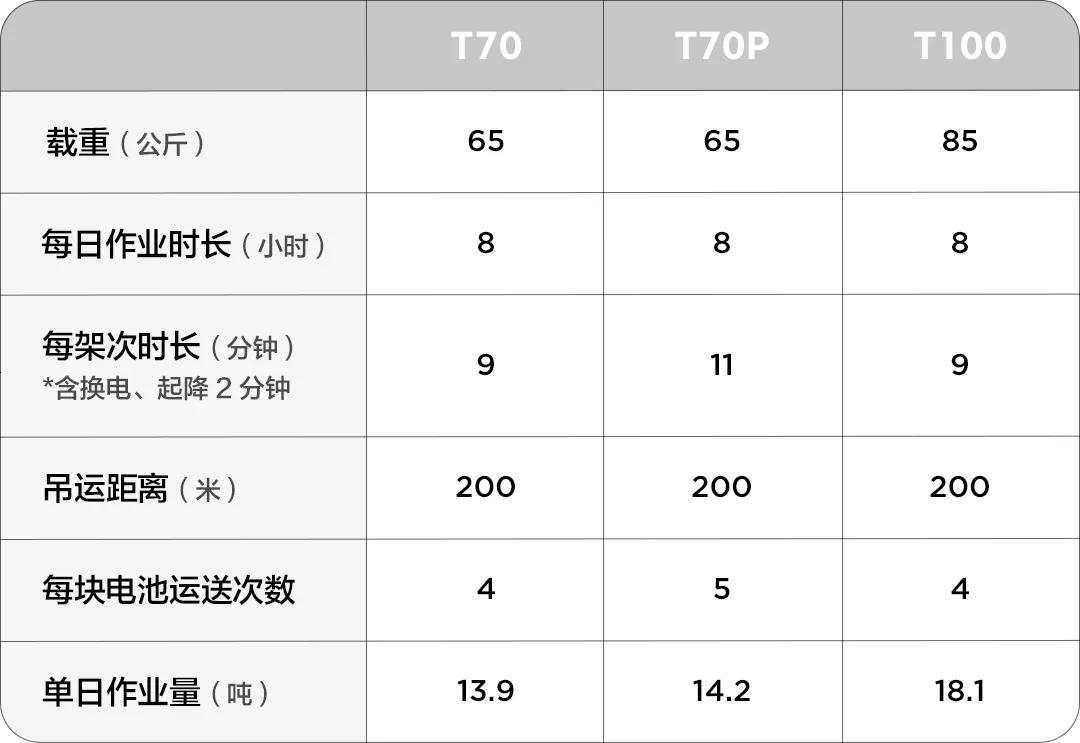DJI Agriculture unveiled three new products at its 2025 launch event: the T70, T70P, and T100. With the current timing being ideal for purchasing new equipment, many users have been asking which model best suits their needs.
To help users choose the most suitable and efficient product, we conducted real-world tests of the three drones across multiple applications—broadacre spraying, broadacre spreading, orchard spraying, and aerial transport. We compared their performance in different operational scenarios, evaluating factors such as efficiency and fuel consumption, to provide clear insights for better-informed purchasing decisions.
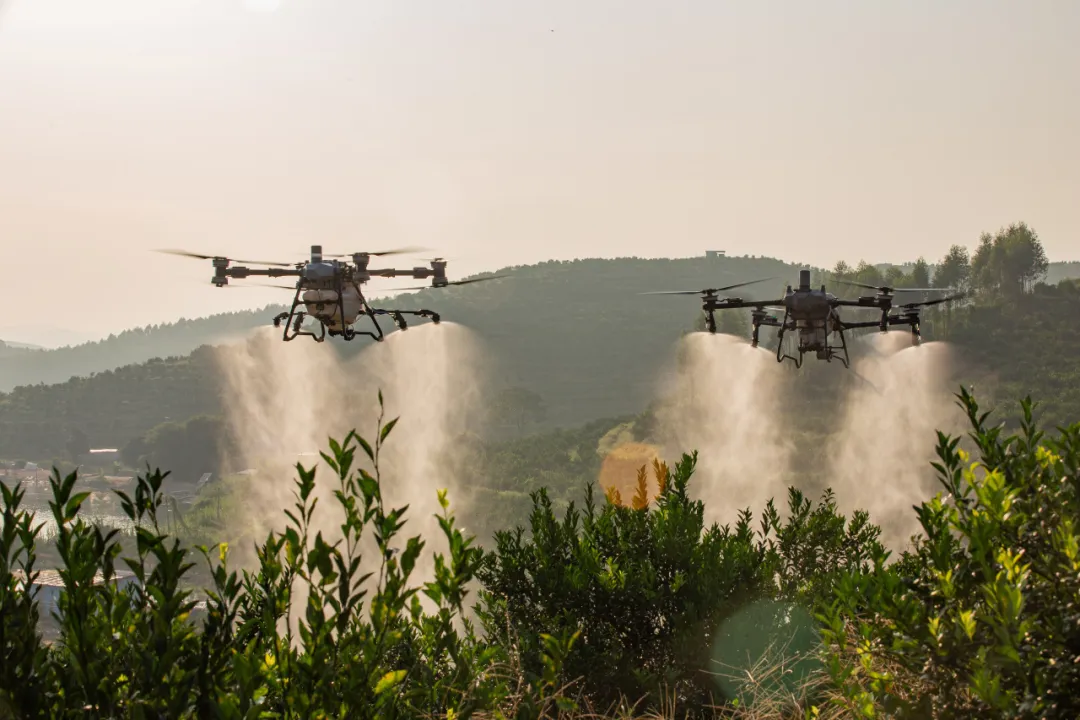
Broadacre Scenario
Users with small plots and only spraying tasks are suitable for the T70 series, which offers sufficient efficiency and better cost-effectiveness. For those with spreading needs, we recommend going all-in and choosing the T100.
Broadacre Spraying
1、rimarily Spraying — Prioritize the T70 Series
High Cost-Effectiveness and Low Fuel Consumption
According to our real-world tests, the T70 achieves a high spraying efficiency of 185.5 mu per hour, with fuel consumption as low as 0.73 liters per flight, making it an economical choice with low purchase and operating costs.
Under the same field conditions and parameters, the T70P reaches an efficiency of 205.9 mu per hour with improved endurance. Its fuel consumption is tested at only 1.0 liter per flight, so those seeking higher efficiency can opt for the T70P.
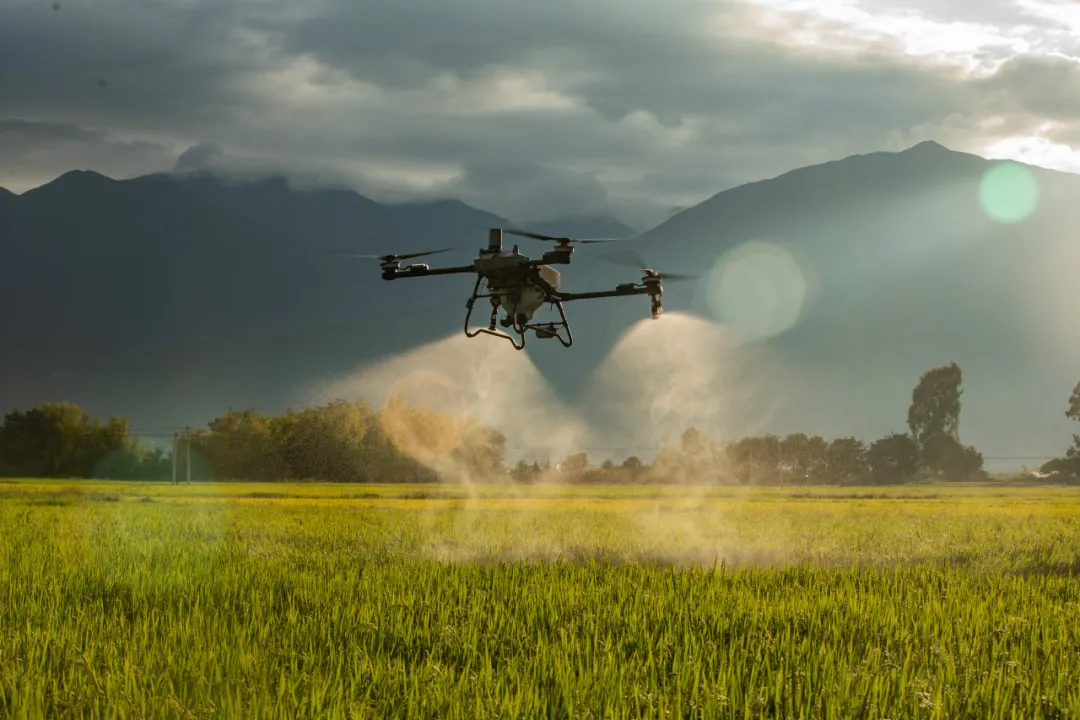
2、The T100 Is Suitable for Larger-Scale Operations
Large Fields, Ultimate Efficiency
The T100 boasts powerful propulsion and stronger downward airflow. Under the same operational conditions, it can increase the spraying width by 28% and work speed by 21%, fully leveraging its efficiency advantage on large plots. However, using it on small fields may reduce efficiency due to frequent turns and faster power consumption.
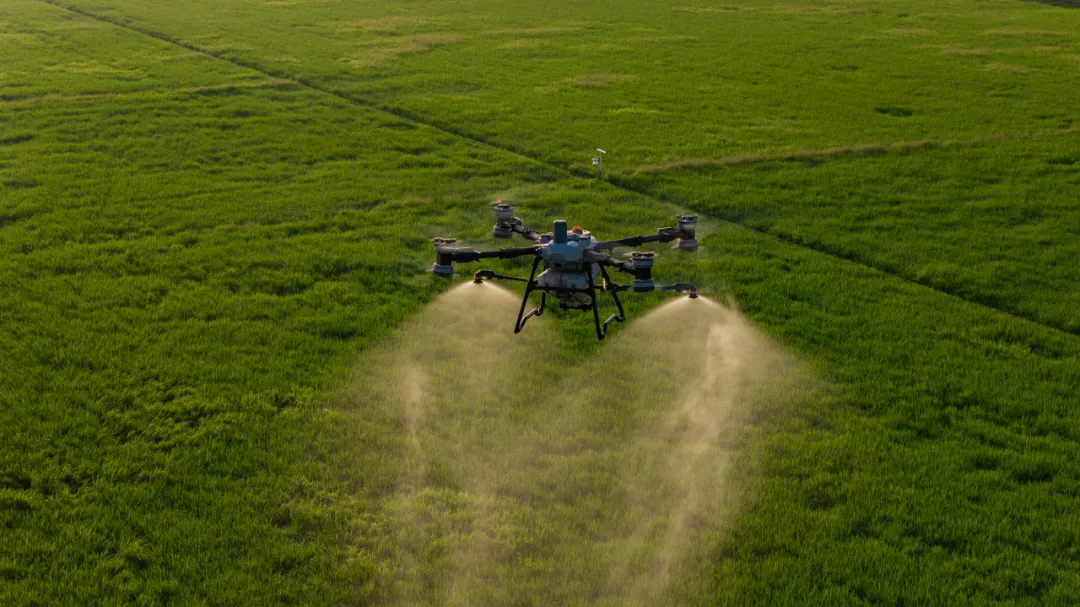
Broadacre Spraying Real-World Test Data
The test field is a flat rice paddy with no obstacles inside and square boundaries. The operation start point is approximately 50 meters from the takeoff/landing point, and the flight path length is 221 meters. The operational parameters and results are as follows:
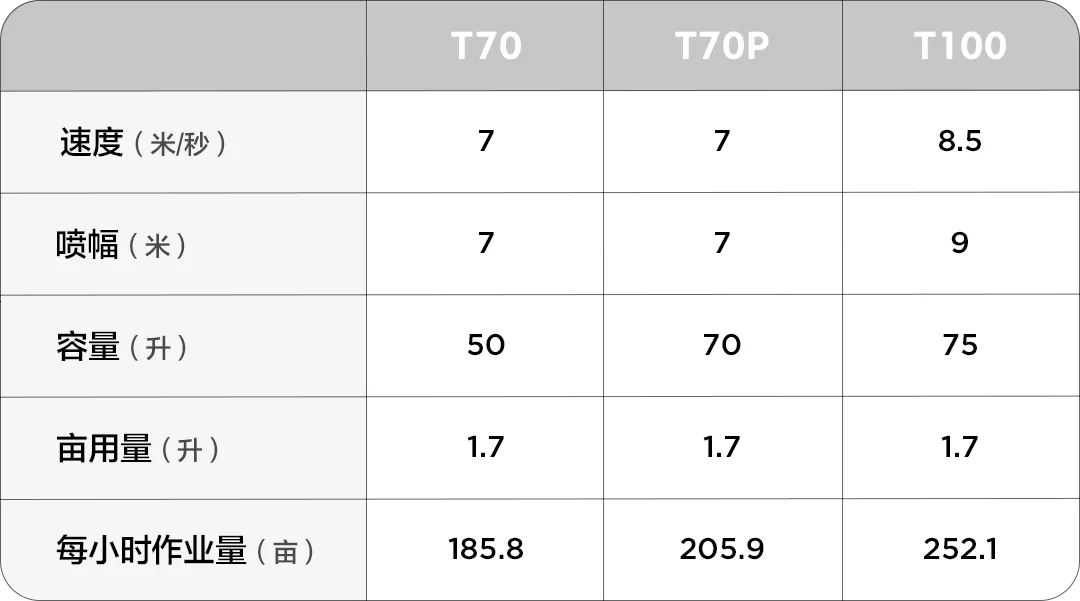
**Operational Fuel Consumption Test**
This test, using broadacre spraying as an example, was conducted on a flat rice paddy with no obstacles and square boundaries. The operation starting point was approximately 50 meters from the takeoff and landing spot, with a flight path length of 221 meters.It’s clear that the T70 has lower operating costs, making it the more economical choice.
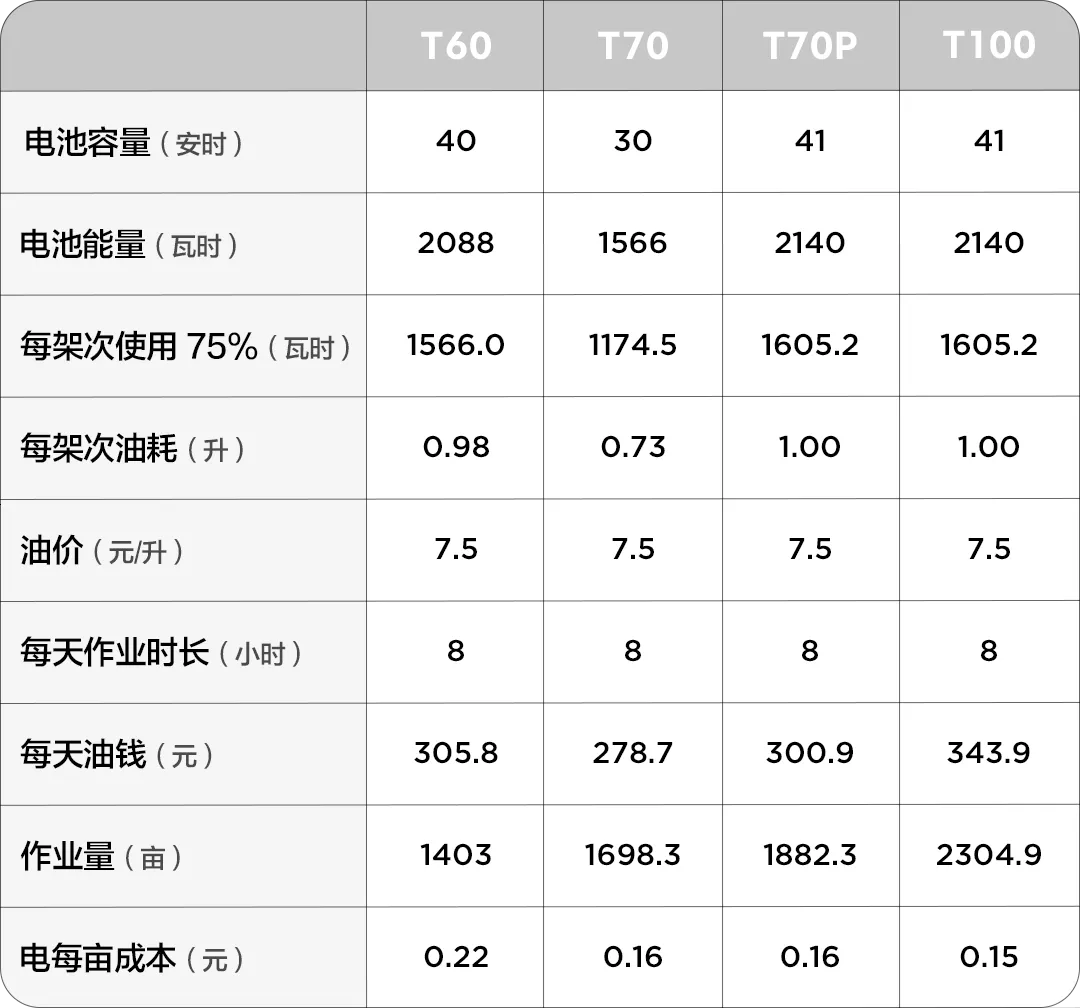
Broadacre Spreading
1、The T100 Is the Top Choice for Users Seeking High Spreading Efficiency
Spreading Powerhouse, Efficiency Increased by 70%
The T100 can carry two bags of fertilizer at once, offering the highest load capacity. With an ultra-high flow rate of 400 kg/min and a spreading width increased by 25%, its overall operational efficiency is 70% higher than the T60, making it the new generation powerhouse for fertilizer spreading.

2、The T70 Is Suitable for Most Users
Cost-Effective with 20% Efficiency Improvement
Compared to the T60, the T70 series offers advantages in load capacity, spreading width, and flow rate, resulting in an overall spreading efficiency increase of 20%.
The T70 and T70P have the same spreading load capacity, but the T70P has a longer endurance, requiring fewer battery swaps throughout the day, which slightly improves operational efficiency. However, considering the lower purchase price and fuel consumption of the T70, if its spreading efficiency meets your needs, we recommend choosing the T70.
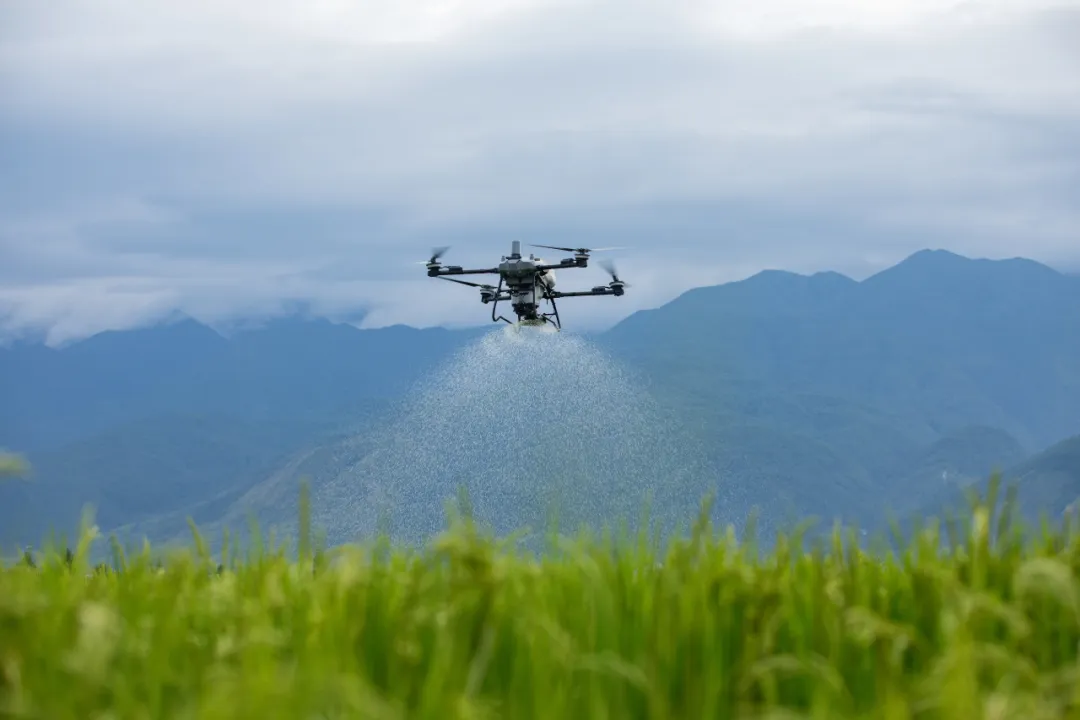
Broadacre Spreading Real-World Test Data
The test field is a flat rice paddy with no obstacles inside and square boundaries. The operation start point is approximately 20 meters from the takeoff point, and the flight path length is 200 meters. The operational parameters and efficiency results are as follows:
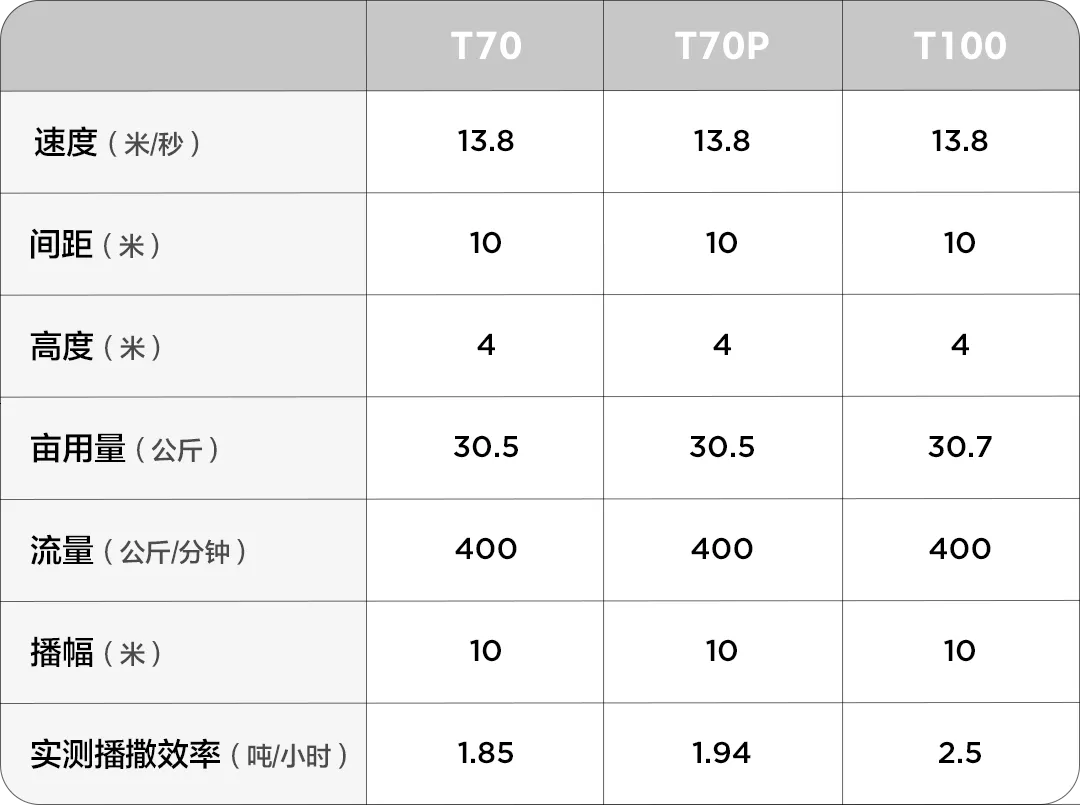
Orchard Scenario
In orchard settings, different types of trees have varying canopy thickness. For thick-canopy fruit trees like lychee and longan, the T100 is recommended. For fruit trees such as citrus, the T70 series is a solid choice.
1、The T100 Is the First Choice for Orchard Operation
Thick Canopy, Large Areas
Orchard work requires higher flow rates—the greater the load capacity, the higher the efficiency. The T100 not only offers the highest efficiency but also features coaxial dual rotors that provide stronger penetration, delivering better spraying results for thick-canopy trees like lychee and longan. Additionally, the T100 is equipped with a more advanced safety system and stronger sensing capabilities, ensuring better performance even in complex mountainous orchards.
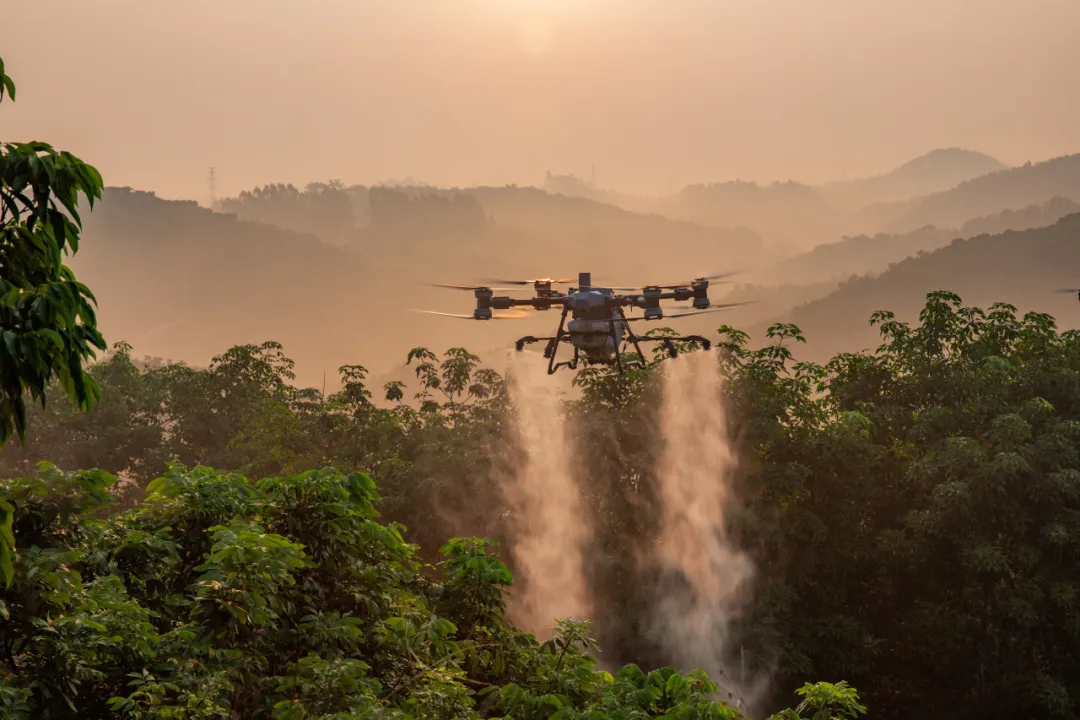
2、The T70 Series Is More Suitable for Personal Orchard Use
Cost-Effective
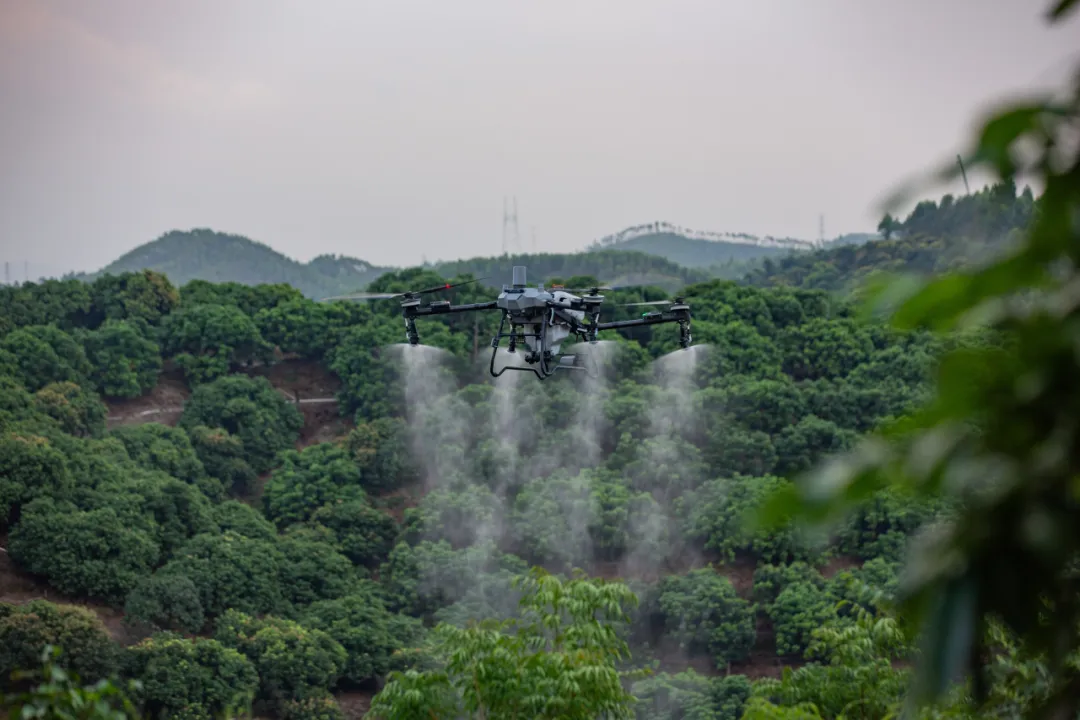
Orchard Efficiency Real-World Test
The test site is a mountainous citrus orchard with no obstacles. The drone took off nearby, and the flight path length was 75 meters. The specific parameters and efficiency are as follows:
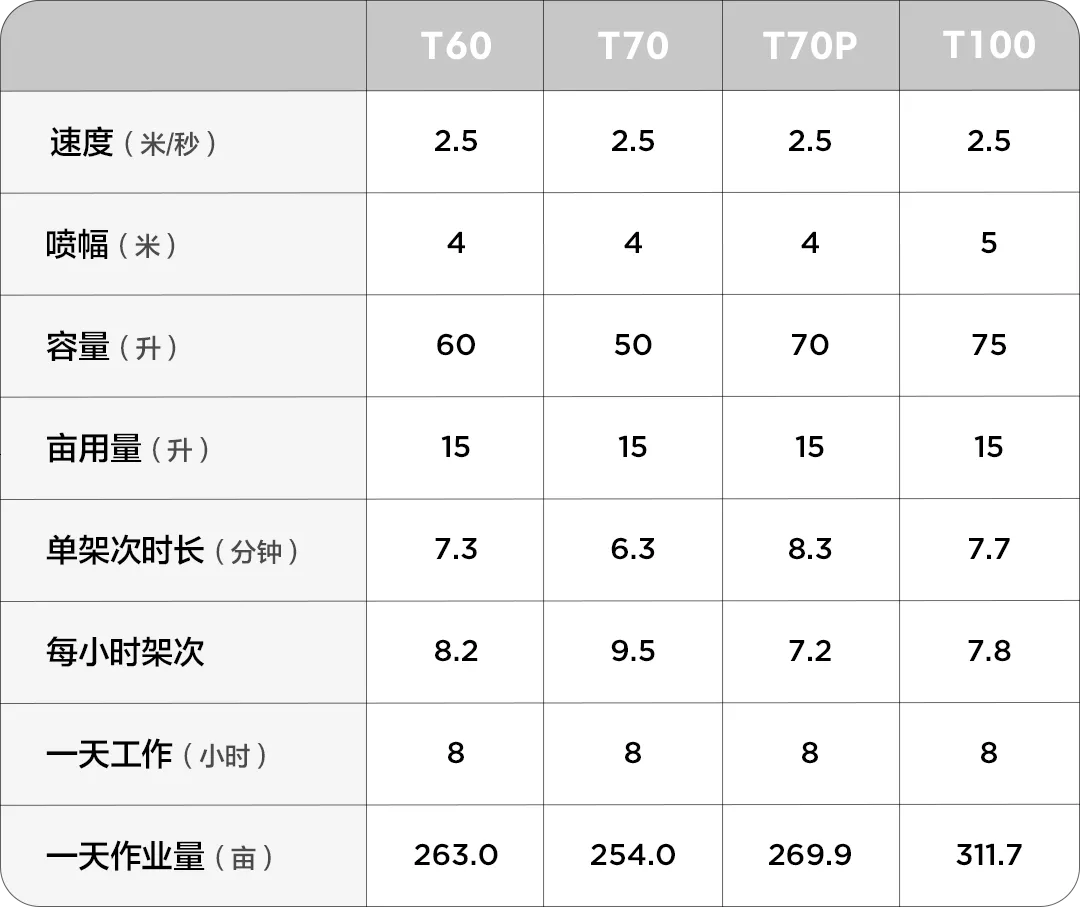
Aerial Transport Scenario
For service teams or users with heavy-load aerial transport needs, the T100 is the top choice. If aerial transport is infrequent, the T70 series can already meet the requirements.
1.The T100 Is the First Choice for Service Teams
Power Redundancy, Aerial Transport Powerhouse
The T100 has the highest load capacity, transporting more cargo per flight and delivering the highest operational efficiency without question. Additionally, the T100 features powerful propulsion with a thrust-to-weight ratio of up to 2.2, providing stronger power to handle strong winds. Thanks to its higher power redundancy, even if one motor unexpectedly stops, stable flight can be maintained to ensure safe aerial transport.
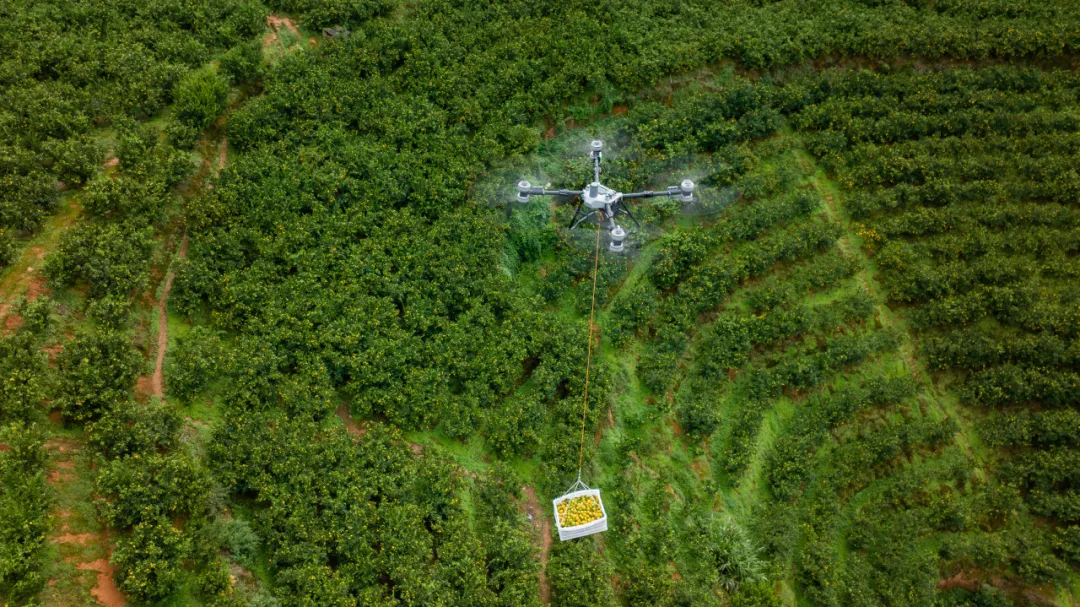
2、The T70 Series Meets Basic Aerial Transport Needs
Versatile and Cost-Effective

Aerial Transport Efficiency Real-World Test
